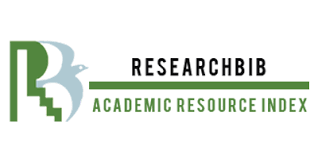A HEALTHY LIFESTYLE AS THE BASIS OF PREVENTION
Keywords:
Healthy lifestyle, disease prevention, chronic diseases, diet, physical activity, smoking cessation.Abstract
This article explores the critical role of a healthy lifestyle in the prevention of chronic diseases. It examines key lifestyle factors such as diet, physical activity, and harmful habits like smoking and excessive alcohol consumption. The study employs a mixed-methods approach, combining quantitative surveys and qualitative interviews with healthcare professionals. Findings indicate that adherence to a healthy lifestyle significantly reduces the risk of chronic diseases. The article emphasizes the importance of personalized health education and community-based interventions in promoting healthier behaviors.
References
1.World Health Organization. (2020). Global status report on noncommunicable diseases 2019. Geneva: WHO.
2.Centers for Disease Control and Prevention. (2021). The benefits of physical activity. Retrieved from [CDC website](https://www.cdc.gov/physicalactivity/basics/pa-health/index.htm).
3.Hu, F. B. (2013). Resolved: There is sufficient scientific evidence that decreasing consumption of sugar-sweetened beverages will reduce the prevalence of obesity in the United States. Obesity, 21(12), 2292-2295.
4.Mozaffarian, D., & Ludwig, D. S. (2015). Dietary guidelines in the 21st century: A time for food. JAMA, 313(24), 2421-2422.
5.Kahn, R., & Cooper, L. (2014). Pathways to obesity prevention: A public health approach. Health Affairs, 33(11), 1941-1949.
6.Sallis, J. F., & Owen, N. (2015). Ecological models of health behavior. In Health Behavior: Theory, Research, and Practice (pp. 43-64). Jossey-Bass.
7.National Institute on Alcohol Abuse and Alcoholism. (2020). Alcohol facts and statistics. Retrieved from [NIAAA website](https://www.niaaa.nih.gov/publications/brochures-and-fact-sheets/alcohol-facts-and-statistics).
8.American Heart Association. (2021). Diet and lifestyle recommendations. Retrieved from [AHA website](https://www.heart.org/en/healthy-living/healthy-eating).
9.U.S. Department of Health and Human Services. (2018). Physical activity guidelines for Americans. 2nd edition. Washington, DC: HHS.
10.World Health Organization. (2021). Tobacco. Retrieved from [WHO website](https://www.who.int/news-room/fact-sheets/detail/tobacco).
11.Kahn, R., & Kelly, S. (2016). The role of health care providers in obesity prevention. American Journal of Preventive Medicine, 50(1), 1-3.
12.Pomeranz, J. L., & Mello, M. M. (2017). The role of public health in the prevention of obesity. American Journal of Public Health, 107(5), 746-748.
13.Gortmaker, S. L., et al. (2015). Changing the future of obesity: Science, policy, and action. Health Affairs, 34(11), 1871-1878.
14.Ritchie, H., & Roser, M. (2018). Obesity. Our World in Data. Retrieved from [Our World in Data website](https://ourworldindata.org/obesity).
15.Swinburn, B. A., et al. (2019). The global obesity pandemic: Shaped by global drivers and local environments. The Lancet, 394(10198), 1005-1007.







